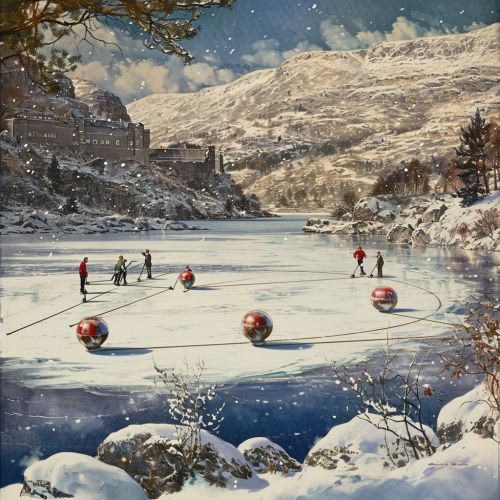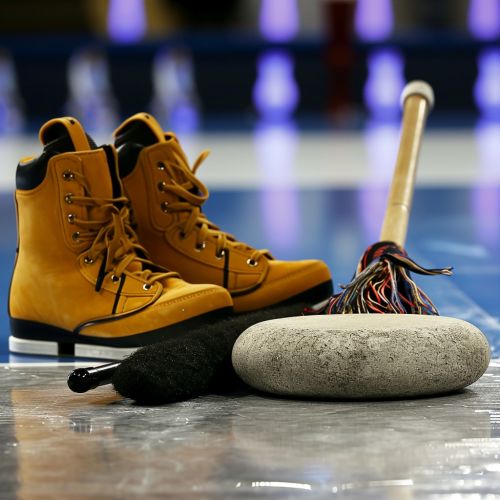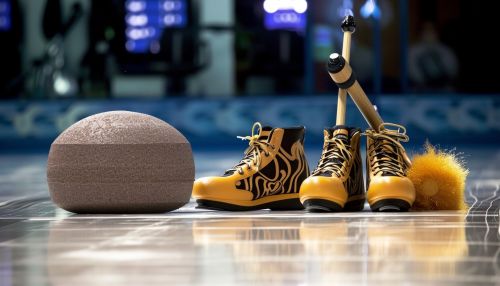Curling
History
Curling, a sport that originated in Scotland during the 16th century, is often referred to as "chess on ice". It was initially played on frozen ponds and lochs with players using stones of various sizes and shapes, making it a unique sport of its time. The first written reference to curling dates back to 1541 in the records of Paisley Abbey, Scotland.


The sport gradually evolved over centuries, with the first curling clubs established in Scotland in the early 19th century. The Grand Caledonian Curling Club, formed in 1838, was instrumental in standardizing the rules, which were subsequently adopted by clubs in Canada and the United States. The club was later granted royal patronage and became the Royal Caledonian Curling Club.
Equipment
Curling is played with a variety of specialized equipment. The curling stone, or rock, is made of granite and weighs between 38 and 44 pounds. Each stone has a handle attached to the top for easy gripping. The bottom surface, or running surface, is slightly concave, allowing the stone to curl (or move in a curved path) as it travels down the ice.
Curlers wear special shoes, one of which has a Teflon sole to help the player slide on the ice, while the other has a rubber sole for traction. A curling broom, used to sweep the ice surface, is another essential piece of equipment. The sweeping motion warms the ice and reduces friction, allowing the stone to travel farther and straighter.


Gameplay
A curling match, or game, is played between two teams of four players each on a rectangular sheet of ice. The teams take turns sliding the stones towards a target area, known as the "house". The house is a set of concentric circles painted on the ice. The objective is to get the stones as close to the center of the house, the "button", as possible.
Each player delivers two stones per "end", and a game typically consists of eight or ten ends. The team with the stone closest to the button after all stones have been delivered scores points. The number of points scored is equal to the number of stones closer to the button than the opponent's closest stone.
Sweeping is a crucial part of the game. Players sweep the ice in the path of the stone to control its speed and direction. The skip, or team captain, stands in the house and directs the sweepers.


Strategy and Tactics
Curling is a game of strategy, often compared to chess due to the high level of strategic decision-making involved. The skip, who determines the team's strategy, must consider several factors, such as the score, the ice conditions, and the strengths and weaknesses of the team members.
One common strategy is to place stones in the house early in the end to score points, known as a "draw" shot. Another strategy is to remove the opponent's stones from play, known as a "takeout" shot. A "guard" shot involves placing a stone in front of the house to protect the team's stones inside the house.
The "hammer", or last stone of the end, is a strategic advantage because it allows the team to potentially score multiple points or nullify the opponent's previous shots.
Competitions and Championships
Curling is played at various levels, from local club competitions to international championships and the Winter Olympics. The World Curling Championships and the European Curling Championships are among the most prestigious events in the sport.
The Scottish Curling Championships have a rich history, dating back to the 19th century. The Brier, the Canadian Men's Curling Championship, and the Scotties Tournament of Hearts, the Canadian Women's Curling Championship, are major events in the Canadian curling calendar.


